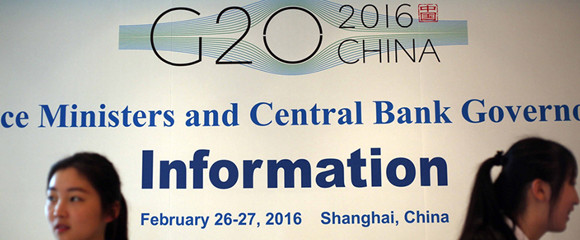Curb graft to boost growth, reduce poverty
Updated: 2016-05-09 08:19
By ASIT K. BISWAS/CECILIA TORTA JADA/AUGUSTIN BOEY(China Daily)
|
|||||||||

The magnitude and extent of global corruption is difficult to estimate because such activities are always covert and invariably done in secret. The World Bank estimates that bribery paid across the world every year exceeds $1 trillion. The World Economic Forum estimates corruption costs now exceed 5 percent of global GDP, a huge sum by any account.
Corruption seriously hinders poverty alleviation in developing countries in Asia. According to the Asian Development Bank, some 320 million people in Asia live in absolute poverty. Close to 30 percent of these poor are from South Asia and about 25 percent are from Southeast Asia. Poverty alleviation can at best be incremental when corruption eats into significant amounts of development funds. Asian countries like China, India, Bangladesh, Pakistan, Indonesia, Malaysia and the Philippines, which together account for half the world's population, all face pervasive corruption.
A World Bank analysis indicates that if developing countries can control corruption and the rule of law is properly enforced, per capita income could increase fourfold in the long term. On average, the business sector can grow by an added 3 percent per year, and socio-economic indicators like infant mortality rate could be reduced by some 75 percent.
More perniciously, several studies have shown that the costs of corruption are disproportionately borne by the poor. This means corruption not only deprives the poor of public goods but also increases income inequality.
Corruption encourages public officials in developing countries not to enforce environmental laws. Projects are approved fraudulently even when they do not meet environmental standards. This indirectly worsens the lot of the poor, and leads to disastrous environmental consequences, which some scholars have referred to as "environmental poverty".
In China, corruption and non-compliance of regulations have often been one of the main causes of rising pollution levels. Illegal discharges of hazardous industrial, mining and agrochemicals have rendered nearly 20 percent of China's non-arable farmlands unusable for growing food crops. In all developing countries in Asia, the quality of water in lakes, rivers and aquifers has deteriorated progressively because of corruption and non-compliance of laws. The long-term health and environmental costs of such corrupt practices are going to be very significant.
Related Stories
China's military deploys its first corruption inspectors 2016-05-05 15:34
New rule targets military corruption 2016-05-09 08:02
Corruption threshold raised by new judicial interpretation 2016-04-18 15:20
Opening-up the market for funeral services can eliminate corruption 2016-03-31 07:52
Today's Top News
AC Milan starts sale talks with Chinese investors
London's mayor an exception to Muslim ban -Trump
China consumer prices up 2.3% in April
EU anti-dumping moves may damage ties with China
Search widens for leading overseas professionals
60% of career women say no to second child: report
Testing times
Big hopes as China hosts the G20
Hot Topics
Lunar probe , China growth forecasts, Emission rules get tougher, China seen through 'colored lens', International board,
Editor's Picks

|

|

|

|

|

|







